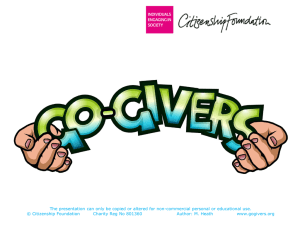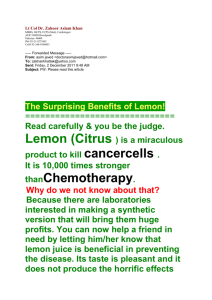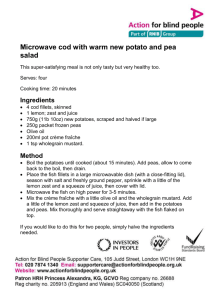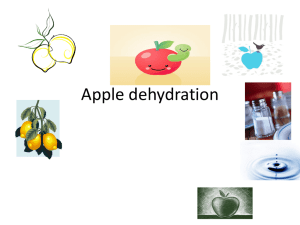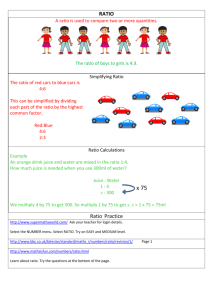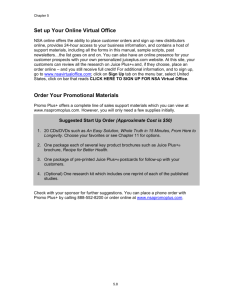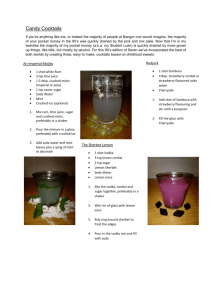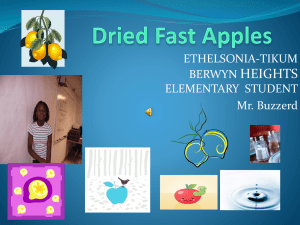Lemon energy materials Piece of can food Materials 2 aligator clips
advertisement
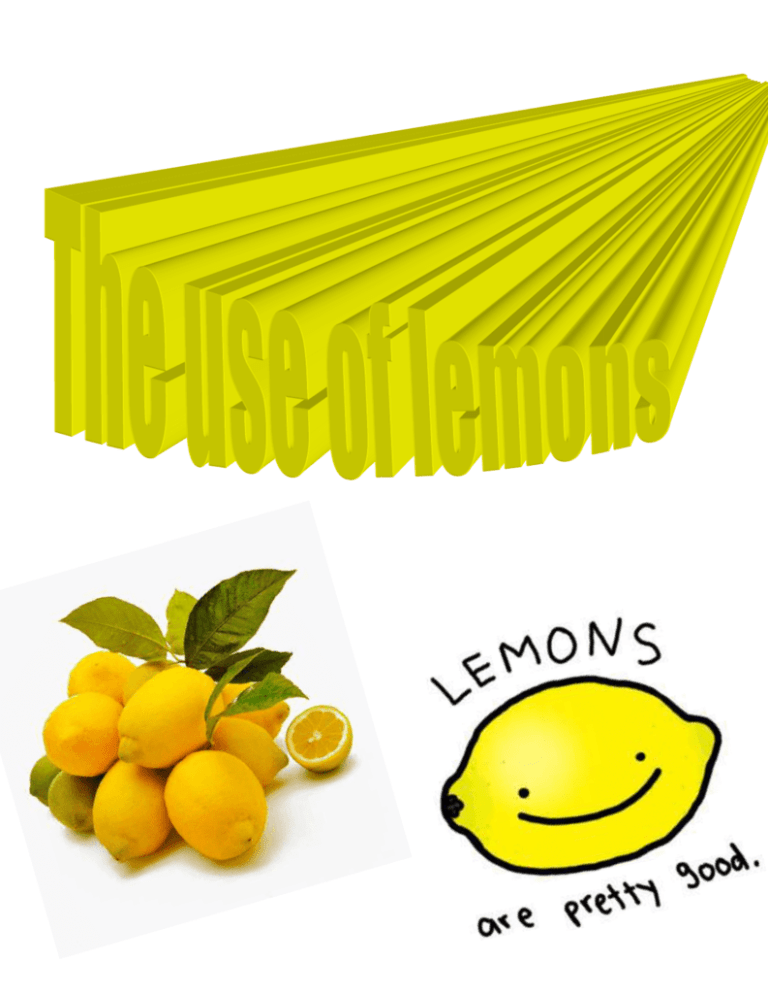
Lemon energy materials Piece of can food Materials 2 aligator clips 1 beaker Natural lime juice Aluminum Piece of food can Procedure Bring a beaker fill it with 150ml of lime juice insert the aluminum and the piece if can ( the piece of can should be cut and have a length of 10cm and width of 2 cm put a aligátor clip on the aluminum and putt he other aligátor clip on the piece of can. The 2 end of aligátor clips click the in eny obect you want to get energy in Lemon deoderant 3 T lemon juice 3 T Baking Soda 2 T Butter Procedure Mix baking soda and lemon juice together in a medium sized bowl. Put in shea butter and make sure it is well mixed Store in small glass jar or old deodorant container for easy use. Floor cleaner 1L of water 1/4L of vinegar 1/2 L of lemon juice process we mix the liter of water with the 1/4L of vinager and add half liter of lemon juice. Its very important to mix good vinagr teeth cleaner materials salt lime juice Process Mix the salt with lemon juice. Make sure it gets well mixed , put your toothbrush in it and brush for 1-2 minutes Toilet cleaner 1L of water 1/4L of vinegar 1/2 L of lemon juice process we mix the liter of water with the 1/4L of vinager and add half liter of lemon juice. Its very important to mix good. After that we add hot water to it then we pour it in the toilet and leave it 5-10 hours soap materials soap bases lemon juice we cut the soap bases in squares, we put them in a bowl, then we put it in the microwave for like 1 min and a half. After its melted put ½ liter of saop base in a bowl and pour ¼ liter of lemon juice on it and mix well, then we put it in a container for it to get in shape and leave it to freeze for 2 hours Lemon The lemon is a small evergreen tree native to Asia. The tree's ellipsoidal yellow fruit is used for culinary and non-culinary purposes throughout the world, primarily for its juice, though the pulp and rind are also used in cooking and baking. The juice of the lemon is about 5% to 6% citrus acid, which gives lemons a sour taste. The distinctive sour taste of lemon juice makes it a key ingredient in drinks and foods such as lemonade. Crocodile clip A crocodile clip is a simple mechanical device for creating a temporary electrical connections, and is named for its resemblance to an alligator's or crocodile's jaws. Functioning much like a springloaded clothespin, the clip's tapered, serrated jaws are forced together by a spring to grip an object. When manufactured for electronics testing and evaluation, one jaw of the clip is typically permanently crimped or soldered to a wire, or is bent to form the inner tubular contact of a ~4 mm female banana jack, enabling quick non-permanent connection between a circuit under test and laboratory equipment or to another electrical circuit. The clip is typically covered by a plastic shroud or "boot" to prevent accidental short-circuits. Aluminium is a chemical element in the boron group with symbol Al and atomic number 13. It is a silvery white, soft, ductile metal. Aluminium is the third most abundant element (after oxygen and silicon), and the most abundant metal in the Earth's crust. It makes up about 8% by weight of the Earth's solid surface. Aluminium metal is so chemically reactive that native specimens are rare and limited to extreme reducing environments. Instead, it is found combined in over 270 different minerals The chief ore of aluminium is bauxite. Piece of can food Baking soda Sodium bicarbonate is the chemical compound with the formula NaHCO₃. Sodium bicarbonate is a white solid that is crystalline but often appears as a fine powder. It has a slightly salty, alkaline taste resembling that of washing soda Vinegar is a liquid consisting mainly of acetic acid (CH3COOH) and water. The acetic acid is produced by the fermentation of ethanol by acetic acid bacteria.Vinegar is now mainly used as a cooking ingredient, but historically, as the most easily available mild acid, it had a great variety of industrial, medical, and domestic uses, some of which (such as its use as a general household cleanser) are still promoted today. Water Water is a transparent fluid which forms the world's streams, lakes, oceans and rain, and is the major constituent of the fluids of living things. As a chemical compound, a water molecule contains one oxygen and two hydrogen atoms that are connected by covalent bonds. Water is a liquid at standard ambient temperature and pressure, but it often co-exists on Earth with its solid state, ice; and gaseous state, steam (water vapor). Soap bases Soap making with our quality melt and pour soap bases is easy, convenient, and doesn't require the use of caustic lye. There is a nice selection of luxurious specialty bases including cocoa butter, shea butter, goat's milk, honey and aloe vera. Lemon juice The juice of the lemon is about 5% to 6% citric acid, which gives lemons a sour taste. The distinctive sour taste of lemon juice makes it a key ingredient in drinks and foods such as lemonade. Common salt is a mineral substance composed primarily of sodium chloride(NaCl), a chemical compound belonging to the larger class of ionic salts; salt in its natural form as a crystalline mineral is known as rock salt or halite. Shea butter is an off- white or ivory-colored fat extracted from the nut of the African shea tree (Vitellaria paradoxa). Shea butter is a triglyceride (fat) derived mainly from stearic acid and oleic acid. It is widely used in cosmetics as a moisturizer, salve or lotion. Shea butter is edible and is used in food preparation in Africa Occasionally the chocolate industry uses shea butter mixed with other oils as a substitute for cocoa butter, although the taste is noticeably different. The uses of these experiments These experiments would make a big change in the world because if we will be using chemicals for our personal product we might not realize that bit is harming the environment. The acid that the lime has is a natural acid it make very few harm to the world. The use of energy harms the world too, we may not see it but if we all use the lemon energy we can make a big change
